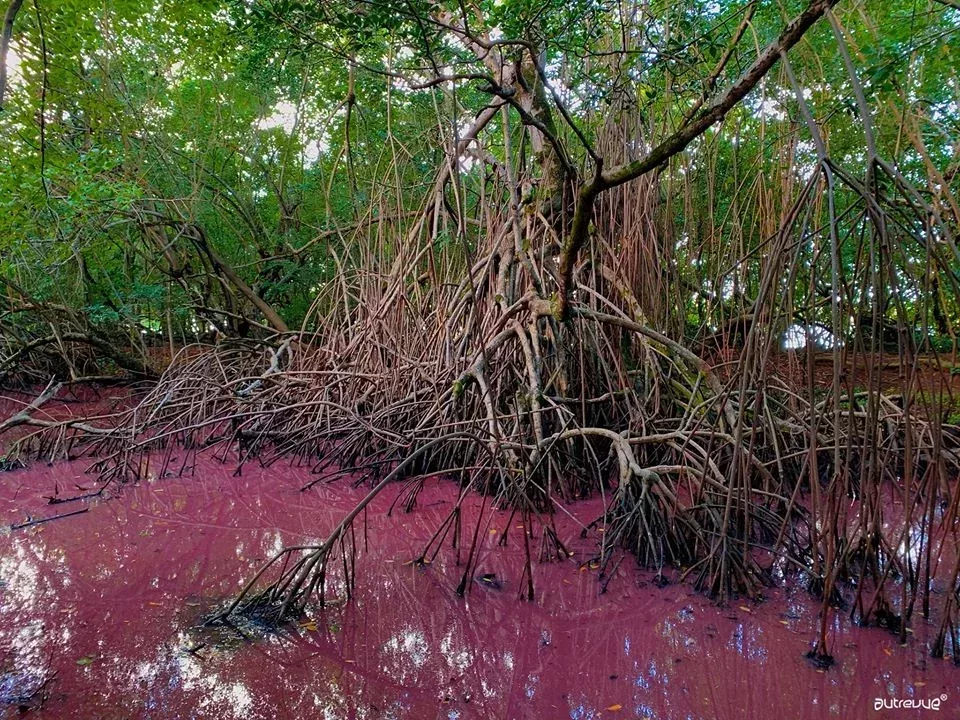Wonderful, enchanting, splendid, “fout sa bel” (“How beautiful!” in creole), have all been used to describe this fabulous phenomenon of pink mangrove or “Mangrose”. But what are the causes?
In the backwaters of Anse Scato (Le Diamant, Martinique, French West Indies) surrounded by a fringe of mangroves comprised of red mangrove (Rhizophora mangle), grey mangrove (Conocarpus erectus) and white mangrove (Laguncularia racemosa), the water has turned pink!
Every year there is a naturally occurring water deficit in the region, however, this year was more pronounced than normal due to weather conditions, this coupled with the absence of the annual Saharan dust plume resulted in conditions favourable for a Dunaliella salina algal bloom.
Dunaliella salina contains a large number of Carotene globules protein (Cgp) which are the pigments responsible for colouring both the algae and water during such a bloom. Alongside the presence of the Dunaliella salina algal bloom the conditions in the pond led to the production of β-carotene which led to the pink water!
Although this colour change is reversible (once the rainwater returns) and most species (fauna and flora) found in the area will be fine, there is a concern for the future. As climate change increases in severity, and dry seasons are drier the likelihood of this occurrence happening more regularly and to increasing degrees the world is unsure what impacts this could have. The summary of the report is to encourage further local investigations.
Learn more and read the report in French and English here.

